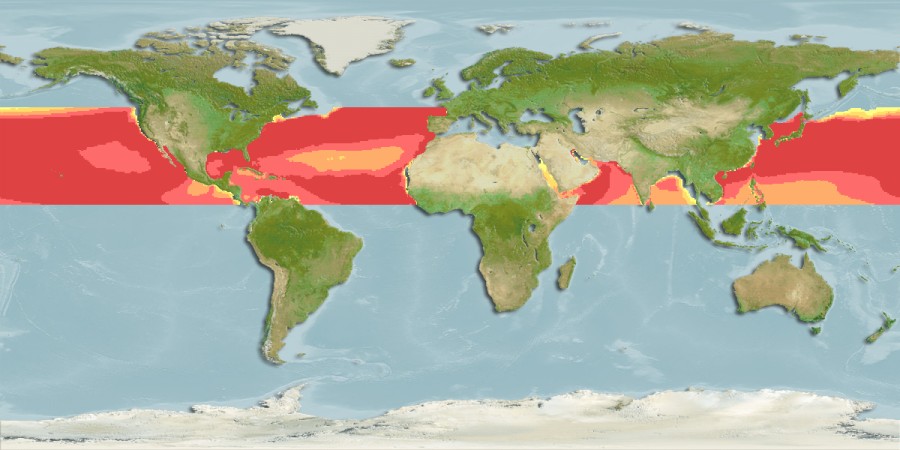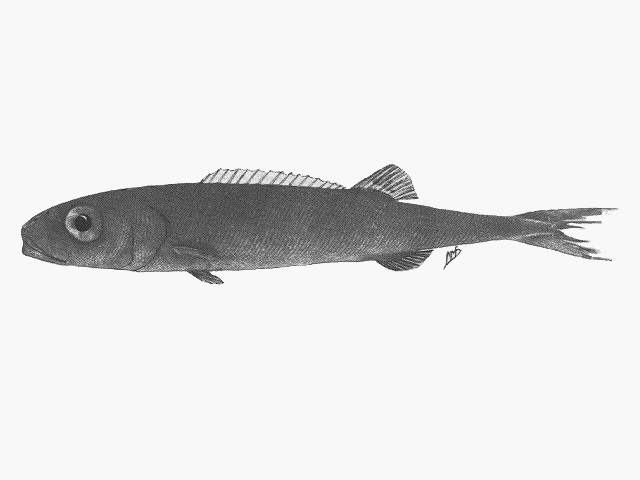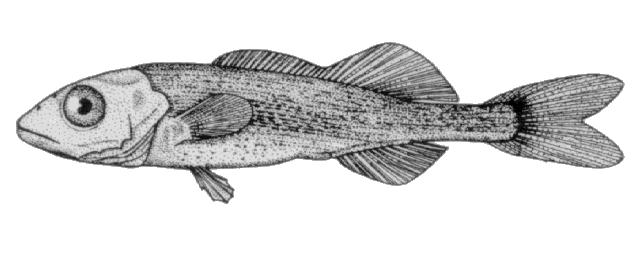Tetragonurus
atlanticus
Lowe,
1839
Bigeye squaretail
View all media / Upload your photos and videos
Expand all
Classification / Names
Teleostei (teleosts) > Scombriformes (Mackerels) >
Tetragonuridae (Squaretails)
Etymology: Tetragonurus: Greek, tetra = four + Greek, gonia = angle + Greek, oura = tail (Ref. 45335).
More on author:
Lowe.
Environment / milieu / depth range / climate zone / distribution range
Distribution
Atlantic, Indian and Pacific: in tropical and subtropical waters. Western Atlantic: Nova Scotia in Canada to Panama (Ref. 7251).
Maps

Tetragonurus atlanticus / Native range
AquaMaps Data sources:
GBIF
OBIS
This map was computer-generated and has not yet been reviewed.

Tetragonurus atlanticus / Suitable habitat
AquaMaps Data sources:
GBIF
OBIS
This map was computer-generated and has not yet been reviewed.

Tetragonurus atlanticus / Point map
AquaMaps Data sources:
GBIF
OBIS
This map was computer-generated and has not yet been reviewed.

Tetragonurus atlanticus / Year 2050
AquaMaps Data sources:
GBIF
OBIS
This map was computer-generated and has not yet been reviewed.
Size / Weight / Age
Max length: 50.0 cm TL male/unsexed (Ref. 4415).
Short description
Biology
Oceanic, mostly in the upper 91 m but adults probably deeper (Ref. 7251). Occasionally strays close to shore (Ref. 7251). Young commonly inquiline in pelagic tunicates, especially Salpa and Pyrosoma (Ref. 11149). Feeds on soft-bodied medusae, ctenophores and especially salps; will also take plankton (Ref. 11149). The flesh may be poisonous (Ref. 27121).
Main reference
Haedrich, R.L. 1986 Tetragonuridae. p. 851. In M.M. Smith and P.C. Heemstra (eds.) Smiths' sea fishes. Springer-Verlag, Berlin. (Ref. 4415)
IUCN Red List Status (Ref. 125652)
Least Concern (LC); date assessed: May 20 2013
CITES (Ref. 123416)
Not Evaluated
CMS (Ref. 116361)
Not Evaluated
Threat to humans
Poisonous to eat (Ref. 27121)
More information
- Countries
- FAO areas
- Ecosystems
- Occurrences
- Introductions
- Stocks
- Ecology
- Diet
- Food items
- Food consumption
- Ration
- Common names
- Synonyms
- Metabolism
- Predators
- Ecotoxicology
- Reproduction
- Maturity
- Spawning
- Spawning aggregation
- Fecundity
- Eggs
- Egg development
- Age/Size
- Growth
- Length-weight
- Length-length
- Length-frequencies
- Morphometrics
- Morphology
- Larvae
- Larval dynamics
- Recruitment
- Abundance
- References
- Aquaculture
- Aquaculture profile
- Strains
- Genetics
- Allele frequencies
- Heritability
- Diseases
- Processing
- Mass conversion
- Vision
- Pictures
- Stamps, Coins Misc.
- Sounds
- Ciguatera
- Speed
- Swim. type
- Gill area
- Otoliths
- Brains
Estimates based on models
Preferred temperature (Ref. 123201): 13.9 - 28.5, mean 24.8 °C (based on 1976 cells).
Phylogenetic diversity index (Ref. 82804): PD50 = 0.75 [Uniqueness, from 0.5 = low to 2.0 = high].
Bayesian length-weight: a=0.00389 (0.00180 - 0.00842), b=3.12 (2.94 - 3.30), in cm total length, based on all LWR estimates for this body shape (Ref. 93245).
Trophic level (Ref. 69278): 3.6 ±0.4 se; Based on food items.
Resilience (Ref. 120179): Low, minimum population doubling time 4.5 - 14 years (Preliminary K or Fecundity.).
Fishing vulnerability (Ref. 59153): Moderate vulnerability (40 of 100).
Nutrients (Ref. 124155): Calcium = 0 [0, 0] mg/100g; Iron = 0 [0, 0] mg/100g; Protein = 0 [0, 0] %; Omega3 = 0 [0, 0] g/100g; Selenium = 0 [0, 0] μg/100g; VitaminA = 0 [0, 0] μg/100g; Zinc = 0 [0, 0] mg/100g (wet weight);


